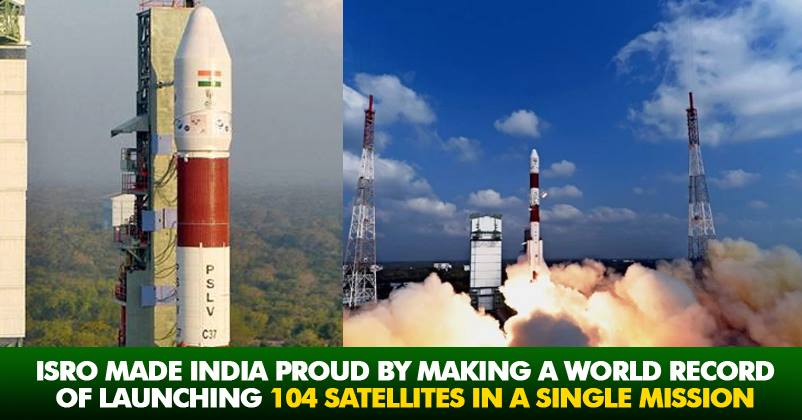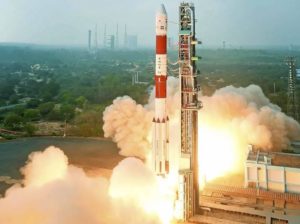ISRO: A SAGA OF ADVANCEMENTS
Dr. Sushil Chandra Pal
In the early 1960s space research activities were in the beginning stage even in America. During that period the early bird, Dr. Vikram Sarabhai, the founding father of Indian Space Research, perceived the utility of space research in society and social life and to prove the potentiality gathered brilliant brains from anthropology, communication and social science in order to spearhead the space research programme in India and in 1962 it was started by setting up of the erstwhile INCOSPAR, the Indian National Committee for Space Research by Jawaharlal Nehru and led by Dr. Vikram Sarabhai. At that time the St. Mary Magadelene’s catholic church in Kerala had been used as the main office of the scientists and the bishop’s house and cattle sheds were used as workshop and laboratory. Let us torch behind to see how Indian Space Research Organisation paved the path of adolescence to advancements and is being lauded in rank and status.
On November 21, 1963 to the surprise of all India successfully launched the subcontinent’s first sounding rocket from Thumba, a small fishing village in Kerala, where a rocket launch-pad was made in a field of coconut groves and that was the very day, the babe organisation started walking staggeringly but with a firm conviction and a promise to keep.
On 15th August, 1969 the Indian Space Research Organisation (ISRO) was established and thence it paved long 50 years from 1969 to 2019 and is passing through its golden jubilee this year. A bullock cart to a truck – a great transformation in its advancement has been made so far. Yet there are miles to go and miles to go!
The year 1975 marked a major milestone for ISRO as it built the country’s first indigenous satellite, Aryabhata, which was launched by the then Soviet Union.
In 1979, the major launching site of ISRO was shifted to Sriharikota and shortly after that, in 1980, RS-1 became the first satellite to be put into orbit by the Indian Satellite Launch Vehicle, SLV-3. Although such feats were achieved by several other countries before this, it was a significant progress for India’s young space programme.
In 1981 ISRO designed India’s first communication satellite, APPLE. ISRO’s Apple
Satellite was carried on a bullock cart for an antenna-range test in 1981. It was done so
because bullock carts are made of wood, and the alternative trucks are made of metals,
which would interfere with the signals. APPLE was subsequently used in several
communication experiments including relay of TV programmes and radio networking. After
this, the INSAT series of satellites developed by ISRO in the 1980s and 1990s went on to
become the largest domestic communication system in the Asia Pacific Region.
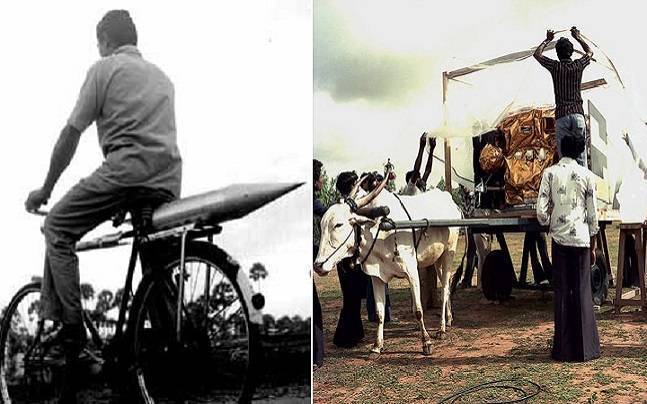
Between 1979 and 1994, ISRO had experienced a number of failures in developing launch vehicles. However, the next series of launch vehicles, Polar Satellite Launch Vehicles (PSLVs), achieved unprecedented success with 38 successful launches and only 1 failure in the last 24 years. Here the phrase ‘ failures are the pillars of success’ is proved once more.
On October 22, 2008 India’s first lunar mission Chandrayaan-1 was successfully launched at 00.52 UTC from ISRO’s Satish Dhawan Space Centre by PSLV C11 launch vehicle. ISRO was successful to crash-land Chandrayaan-1 on the surface of the moon using an indigenous PSLV. The mission confirmed presence of water on the moon among its other achievements.
On November 5, 2013 ISRO sent the Mars orbiter to the red planet by PSLV-C25 and got inserted into Martian orbit on September 24, 2014 in its first attempt. India became the first country to place an orbiter in Mars’ orbit in the first attempt through ISRO’s Mangalyaan Mission, also known as MOM. It was just a $74 million project which was much cheaper than NASA’s ‘Mars Mission Maven’ that cost $671 million. It travelled a distance of 780,000,000 km to reach the red planet. Prime Minister Narendra Modi once famously remarked, “A one-km auto rickshaw ride in Ahmedabad takes Rs 10 and India reached Mars at Rs 7 per km which is really amazing.”
On February 15, 2017 ISRO Created another record by launching 104 satellites in a single mission using the Polar Satellite Launch Vehicle (PSLV-C37) at 9.28 AM IST from SHAR, Sriharikota. Of the 104 satellites there was the 714 kg Cartosat-2 Series Satellite and 103 co-passenger satellites. 96 of the 104 satellites belonged to the United States, Netherlands (1), Switzerland (1), Israel (1), Kazakhland (1) and UAE (1). Thus, ISRO has gradually become the international space service provider too.
On 22 July 2019 at 2.43 PM IST Chadrayaan-2 or Vikram as named after Dr. Vikram Sarabhai, the father of India’s Space programme by a Geosynchronous Satellite Launch Vehicle Mark III (GSLV Mk III). It consists of a lunar orbiter, a lander named Vikram , and a lunar rover named Pragyan, all of which were developed in India. The lander and the rover will land on the near side of the Moon, in the south polar region at a latitude of about 70° south on September 7, 2019 at 1.55 AM IST. ISRO is at its highest preparedness to cross over the 15 minutes of terror. It is now 12.25 AM IST and the whole nation is awaiting in ice- cold silence to observe the successful soft landing of Vikram and Progyan. But unfortunately the lander lost connection with ISRO just at 2.1 km descending stage. The final declaration is kept reserved at “ data being analysed”.
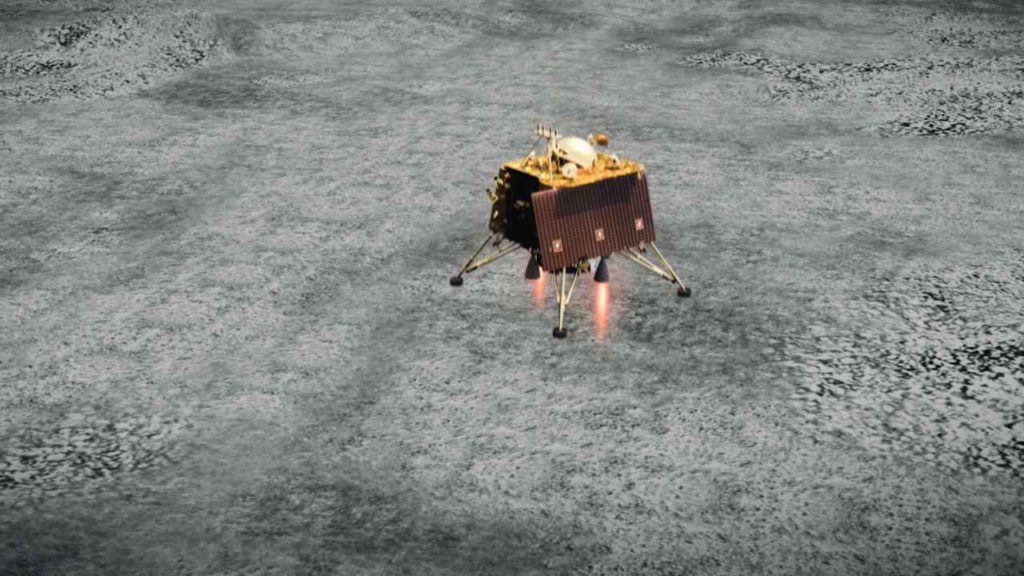
Projected Soft Landing of Vikram and Pragyan on the Moon Surface.
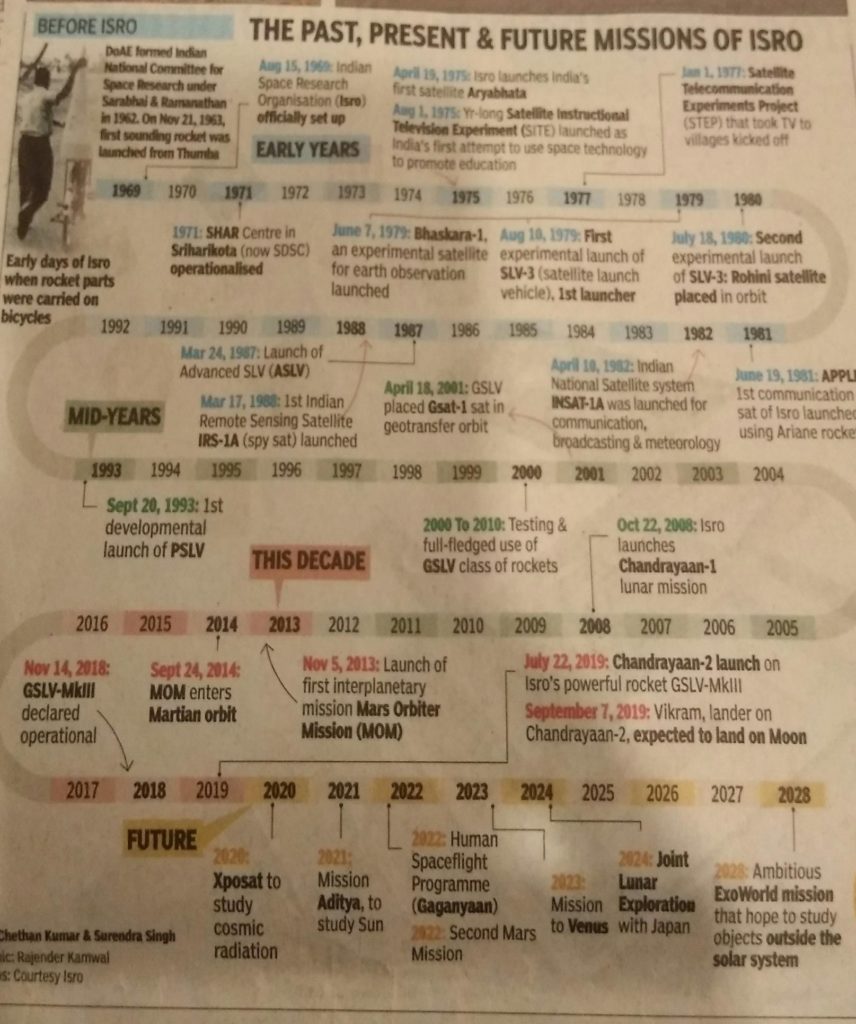
ISRO’s Past achievements, Present plans of action and Future Vision.
India’s space programme was conceived with a clear priority that space science must first help citizens of the nation. Vikram Sarabhai , the father of India’s space programme once said, “ We have no fantasies of landing people on Moon or studying planets.” It was not be considered as lack of ambition rather it was his vision to make India self reliant in space technology over the course of time. After long 50 years of steady steps ahead ISRO chairman K. Sivan reiterated the same priority. He says, “Sarabhai’s vision that space science and technology must be used for the benefits of common man has been the guiding force for ISRO. And, all our programmes were centred around this vision, which led to several applications.” Obviously, the saga of ISRO is more of successes than failures, setting and breaking of many records and to deserve credible appreciation from all parts of the world. Let us hope for a brighter spectrum for India’s space research programmes and be optimist to foresee a human habitation in Moon or Mars. If dreams come true someday, India would certainly be a pioneer in building human habitation in a planet like Moon or Mars in the far future!
( Courtesy: TOI & google)

